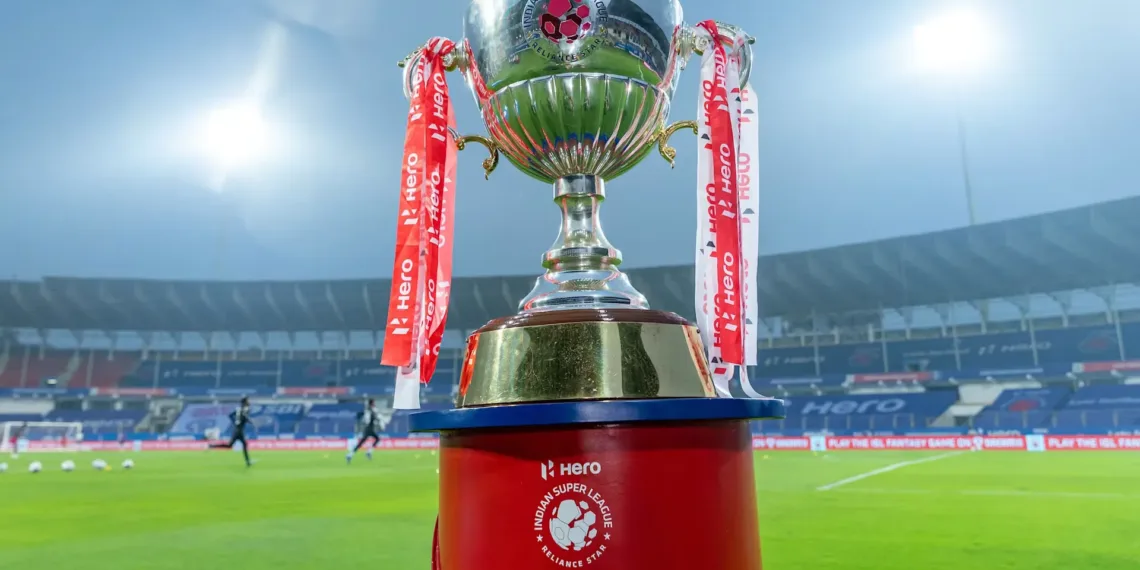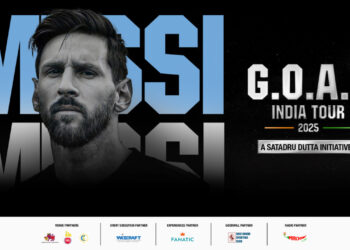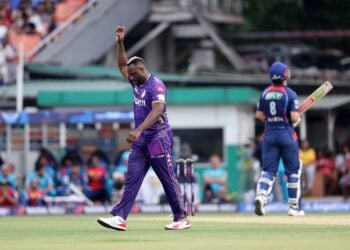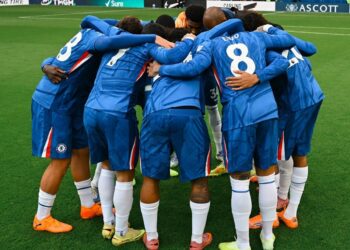Indian football finds itself trapped in unprecedented turmoil as professional players from across the Indian Super League have issued a unified, emotional plea urging the All India Football Federation and stakeholders to immediately revive the stalled 2025-26 season. Led by legendary captain Sunil Chhetri alongside stars including Sandesh Jhingan, Gurpreet Singh Sandhu, and Lallianzuala Chhangte, the joint statement released on November 11, 2025, captures the growing desperation within India’s football community as the league, typically underway by September, remains indefinitely suspended well into November. “To put it simply, we want to play, and now,” the statement declared, reflecting months of frustration that has transformed into existential fear for the sport’s future in India.
Table of Contents
The Crisis Unfolding: How the Indian Super League Reached Breaking Point
The Indian Super League’s current crisis stems from the All India Football Federation’s failed attempt to secure a new commercial partner following the expiration of its 15-year agreement with Football Sports Development Limited. AIFF floated a Request for Proposal on October 16, seeking bids for commercial and media rights management, but the November 7 deadline passed without a single submission despite initial interest from four entities including FSDL, FanCode, Conscient Heritage Group, and a Monaco-based consortium.
Timeline of the Indian Super League Crisis
| Date | Event | Impact |
|---|---|---|
| October 16, 2025 | AIFF issues RFP for commercial rights | Invites bids for 15-year contract |
| November 7, 2025 | Bid submission deadline | Zero bids received |
| November 11, 2025 | Players issue joint statement | United plea for season revival |
| December 8, 2025 | FSDL contract expires | Existing agreement ends |
| December 15, 2025 (Scheduled) | Season start date | Now indefinitely delayed |
The financial terms proposed by AIFF reportedly deterred potential bidders. The federation demanded an annual payment of ₹37.5 crore or 5% of gross revenue (whichever higher), plus covering costs for production with at least 11 cameras, marketing, media rights sales, VAR implementation, and grassroots investment. Additionally, the successful bidder would be required to distribute 70% of revenue to Indian Super League clubs and 30% to I-League teams while adhering to an ₹18 crore salary cap per club starting from the 2025-26 season.

These stringent requirements, combined with questions about the commercial viability of Indian football, created an insurmountable barrier for prospective partners. Sources suggest that even FSDL, which has operated the Indian Super League since its 2014 inception, found the terms commercially unviable, leading to its decision not to submit a formal bid despite years of investment in building the league’s infrastructure and brand value.
Players’ Emotional Appeal: “Our Desperation Has Replaced Our Anger”
The joint statement released by Indian Super League players represents a rare moment of unity across rival clubs, with professionals speaking in one voice to demand urgent action. Sunil Chhetri, India’s all-time leading scorer who announced his international retirement earlier this year, led the charge by posting the statement on his Instagram account, where he wrote: “We are all standing shoulder to shoulder, willing to do whatever it takes to resurrect the sport we love.”
The statement’s language reveals the psychological toll the uncertainty has imposed on professionals whose livelihoods depend on competitive football. “Our anger, frustration and distress has now been replaced by desperation,” the players wrote. “Desperation to play the game we love, in front of people who mean everything to us — our families, our fans.” This emotional appeal moves beyond typical labor disputes to articulate genuine fear about Indian football’s future.
Sandesh Jhingan, India’s defensive stalwart, amplified the message in a video posted on social media: “Where we are right now is not a delay anymore, it’s a standstill for the coaches, fans, staff members, and players. We have worked too hard, sacrificed too much to let our season vanish in silence. The entire Indian football ecosystem is hanging in uncertainty.”
The players concluded their statement with a poignant metaphor that captures their predicament: “We’ve found ourselves in a very dark tunnel for long. We could do with a little light.” This imagery resonates beyond football, speaking to broader concerns about sports governance, professional uncertainty, and the fragility of athletic careers that can be derailed by administrative failures beyond players’ control.
The Fallout: Clubs Suspend Operations, Salaries Delayed
The Indian Super League’s suspension has triggered immediate, devastating consequences for clubs and players across the league. Reigning champions Mohun Bagan Super Giant, one of Indian football’s most storied institutions, has suspended first-team training indefinitely, sending shockwaves through the football community. Kerala Blasters, another founding Indian Super League franchise with passionate fan support, has similarly halted training operations, leaving players in professional limbo.
Impact on Indian Super League Clubs
| Club | Action Taken | Status |
|---|---|---|
| Mohun Bagan Super Giant | Training suspended | Indefinite halt |
| Kerala Blasters | Training suspended | Indefinite halt |
| Chennaiyin FC | Operations suspended | Salary delays reported |
| Inter Kashi | Operations suspended | Salary delays reported |
| Bengaluru FC | Financial difficulties | Struggling with payments |
Chennaiyin FC and Inter Kashi have temporarily suspended operations entirely, with reports emerging of delayed salary payments to players and staff. These financial pressures create cascading effects throughout the football ecosystem, impacting not just star players but coaches, physiotherapists, administrative staff, and countless others whose employment depends on the Indian Super League’s functioning.
Bengaluru FC, despite being one of the league’s more financially stable clubs, has reportedly struggled to meet salary obligations, illustrating how the crisis extends beyond smaller or less established franchises. The situation particularly affects younger players and domestic talent who lack the financial cushion that international stars might possess, threatening their ability to maintain training regimens, pay for nutrition and fitness programs, and simply meet basic living expenses.
The suspension also affects ancillary businesses connected to the Indian Super League ecosystem. Stadium staff, security personnel, catering services, media production crews, and local businesses that benefit from match-day revenues all face economic hardship. This broader economic impact demonstrates how the Indian Super League has evolved beyond merely a sporting competition to become an economic engine for communities across India.
AIFF’s Response: Approaching Supreme Court for Solution
Facing mounting pressure from players, clubs, and fans, the All India Football Federation has signaled its intention to approach the Supreme Court of India seeking modifications to the existing constitutional framework governing the Indian Super League. Justice L. Nageswara Rao, appointed by the apex court to oversee AIFF’s functioning following previous governance crises, met with senior federation officials on Sunday to discuss potential pathways out of the impasse.
The involvement of India’s highest judicial authority underscores the severity of the crisis and the failure of normal administrative channels to resolve the deadlock. The Supreme Court’s intervention earlier in 2025 had already been necessary to facilitate dialogue between AIFF and FSDL when their contractual disputes threatened to prevent the season from starting. However, that intervention only delayed rather than resolved the fundamental issues plaguing Indian football’s governance and commercial sustainability.
Justice Rao’s role as the Bid Evaluation Committee Chairperson adds another layer of complexity. Following the failed tender process, he must submit a report to the Supreme Court explaining why no bids materialized and recommending next steps. This report will prove crucial in determining whether the court orders a restructuring of the tender terms, mandates direct negotiations with specific partners, or pursues alternative solutions to resurrect the Indian Super League season.
AIFF officials have issued multiple statements highlighting their efforts to resume top-division football in India, but these assurances have produced no concrete action. The federation’s credibility has eroded significantly among stakeholders who increasingly view the organization as incapable of effective governance. This crisis represents the latest in a series of administrative failures that have plagued AIFF, from coaching changes to international tournament preparations to youth development program implementation.
Historical Context: The Indian Super League’s Troubled Journey
Understanding the current crisis requires examining the Indian Super League’s complex evolution since its 2014 launch. Created as a glamorous, franchise-based competition modeled on cricket’s Indian Premier League, the ISL aimed to revolutionize Indian football through celebrity ownership, big-name foreign players, and professional infrastructure that traditional clubs lacked. The initial eight city-based franchises played abbreviated seasons designed to generate excitement and commercial interest.
Football Sports Development Limited, the joint venture between Reliance Industries and Star Sports, invested heavily in building the league’s brand. The infusion of capital allowed franchises to sign international stars like Alessandro Del Piero, David Trezeguet, Roberto Carlos, and Florent Malouda, bringing global attention to Indian football. Television production values improved dramatically, and matches were broadcast in multiple languages across India and internationally.

However, tensions always existed between the Indian Super League and I-League, India’s traditional top division. For years, Indian football operated with two parallel top leagues, creating confusion about which represented the true pinnacle of the domestic game. The Asian Football Confederation’s recognition of ISL as India’s top division from 2022-23 resolved this ambiguity but didn’t eliminate underlying governance challenges.
The Indian Super League’s expansion from eight to fourteen teams demonstrates growth but also increased financial pressures. More franchises mean higher operational costs, greater competition for sponsors and viewers, and more complex revenue-sharing arrangements. The league’s promotion-relegation system, introduced to satisfy AFC requirements, adds further uncertainty for clubs worried about financial consequences of relegation.
What Players Are Asking: Specific Demands
The players’ joint statement, while emotional, contained specific demands directed at Indian football’s decision-makers. “This is a plea to all those involved in running our sport in the country, to do whatever it takes to get the football season underway,” they wrote. “India needs its competitive football now more than ever.”
The phrase “whatever it takes” suggests players are willing to accept compromises that might facilitate the season’s commencement. This could include accepting modified financial terms, playing under interim commercial arrangements, or agreeing to temporary measures while permanent solutions are negotiated. The willingness to compromise reflects desperation but also pragmatism from professionals who understand that the perfect solution may not exist.
Players emphasized their readiness to resume immediately once given clearance. “As for us, we remain committed, professional and ready to walk out of that tunnel and onto the pitch the moment we’re told we can,” the statement declared. This assertion counters any suggestion that players have grown complacent or lost competitive edge during the forced layoff. They maintain fitness regimens individually and express eagerness to return to competitive action.
The reference to “honest intent” represents perhaps the statement’s most pointed criticism of AIFF and other stakeholders. By requesting that administrators “match our desperation with honest intent,” players implicitly question whether those in positions of power genuinely prioritize the sport’s welfare or pursue narrower institutional or personal interests. This skepticism reflects years of governance failures that have eroded trust between Indian football’s participants and its administrators.
The Broader Crisis: Indian Football’s Systemic Problems
The Indian Super League’s suspension represents merely the most visible symptom of deeper pathologies afflicting Indian football. The sport has struggled for decades to establish sustainable professional structures despite India’s massive population and growing economy. While cricket dominates India’s sporting landscape both commercially and culturally, football has failed to carve out a comparable space despite occasional moments of hope.
Governance issues plague Indian football at every level. AIFF itself has faced repeated crises, including FIFA’s temporary suspension of the federation in 2022 over third-party interference in its elections. The Supreme Court has been forced to intervene multiple times to address administrative chaos, suggesting systemic dysfunction rather than isolated failures. This pattern of crisis management prevents long-term planning and sustainable development.
Youth development programs remain fragmented and underfunded despite AIFF’s “Vision 2047” strategic plans. India continues to struggle in international competitions, with the men’s national team ranked outside the world’s top 100 and failing to qualify for major tournaments. The women’s team has shown more promise but similarly lacks resources and systematic support. Without strong national team performance, domestic leagues struggle to generate the patriotic interest that drives commercial success.
Infrastructure deficits compound these challenges. Many Indian cities lack stadiums meeting international standards for safety, capacity, and facilities. Training facilities for clubs often fall below standards common in other Asian nations, let alone European or South American benchises. The absence of proper academies and youth systems means Indian football relies heavily on imported talent rather than developing domestic players systematically.
Financial Realities: Why Nobody Bid for Indian Super League Rights
The zero-bid outcome reveals uncomfortable truths about Indian football’s commercial viability. Despite a decade of operation and significant investment, the Indian Super League has not achieved financial sustainability. Television ratings, while respectable by Indian football standards, pale compared to cricket or even international football leagues. Sponsorship revenues remain modest, with major Indian corporations preferring to invest in cricket or individual athlete endorsements.
AIFF’s asking price of ₹37.5 crore annually, plus substantial operational costs, apparently exceeds what commercial partners believe they can recoup through broadcasting rights, sponsorships, and other revenue streams. The comparison to previous arrangements suggests the federation overestimated the league’s current market value, perhaps assuming continued growth from the FSDL era would continue automatically under any operator.
The requirement to fund VAR implementation and maintain high production standards adds significant costs that may not generate proportionate viewer benefits in a market where many fans watch matches on mobile devices or in lower-quality streaming environments. Grassroots investment requirements, while beneficial for long-term development, further increase upfront costs that reduce short-term profitability.
Potential bidders also faced uncertainty about Indian football’s direction. With governance instability, unclear regulatory frameworks, and questions about the league’s long-term structure, investing hundreds of crores represents enormous risk. The reluctance to bid reflects not just current financial challenges but doubts about whether Indian football can achieve the growth trajectory that would make such investments profitable over a 15-year contract period.
What Happens Next: Possible Scenarios
Several potential scenarios could unfold as AIFF seeks Supreme Court intervention and stakeholders negotiate behind the scenes. The most optimistic scenario involves a revised tender process with more commercially realistic terms attracting at least one credible bidder. This would require AIFF to compromise on its financial demands and possibly accept interim arrangements while building toward long-term sustainability.
Another possibility involves AIFF operating the Indian Super League directly rather than through a commercial partner. This would require the federation to develop capabilities it currently lacks in broadcasting, marketing, and commercial operations. Direct operation might reduce costs by eliminating the commercial partner’s profit margin but would increase AIFF’s operational responsibilities and financial risk significantly.
A third scenario could see FSDL returning under modified terms following Supreme Court-mediated negotiations. Despite walking away from the tender, Reliance and Star Sports have invested heavily in building the Indian Super League and might reconsider if offered more favorable commercial arrangements. Their return would provide continuity but might set problematic precedents about AIFF’s inability to operate independently.
The darkest scenario involves the season not happening at all, or occurring in severely truncated form months late with reduced participation. While stakeholders universally wish to avoid this outcome, the gulf between AIFF’s expectations and market realities might prove unbridgeable. Such a collapse would devastate Indian football, potentially setting development back by a decade.
Indian Football’s Moment of Truth
The Indian Super League crisis represents Indian football’s most consequential moment since the league’s 2014 founding. The unified player statement demonstrates that professionals across rival clubs recognize the existential threat to their sport and livelihoods. Sunil Chhetri’s leadership in this moment, coming months after his international retirement, shows the legendary captain’s commitment to Indian football extends beyond his personal career.
For AIFF, this crisis represents both profound challenge and potential opportunity. The federation can either continue down the path of governance dysfunction and unrealistic expectations, or accept that sustainable growth requires pragmatic compromises and professional management. The Supreme Court’s involvement may force changes that the federation would not voluntarily adopt, potentially creating frameworks for more effective governance.
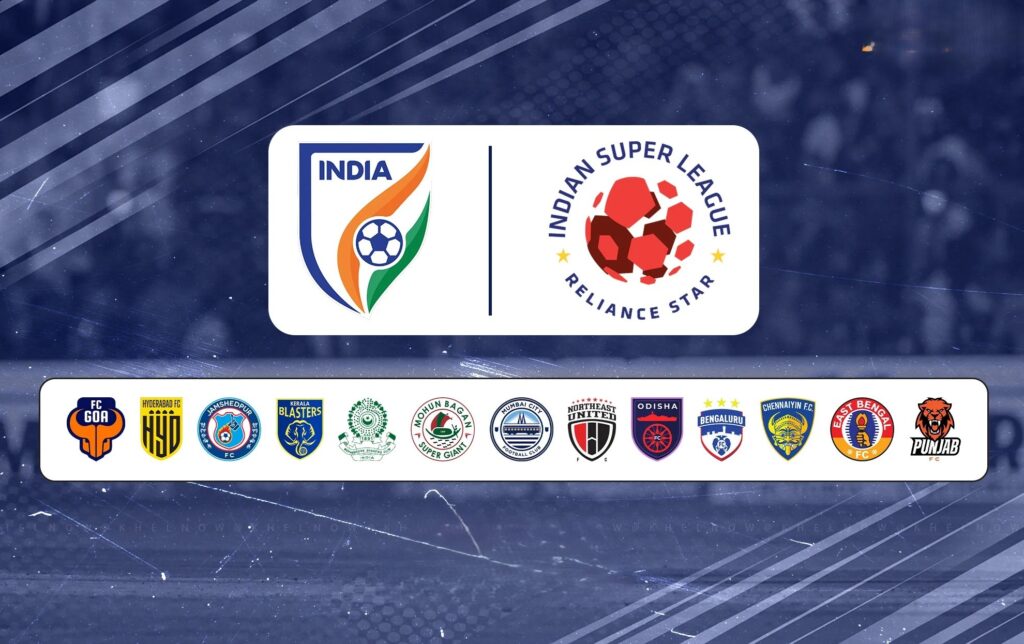
For Indian football fans, the situation provokes both frustration and sadness. The sport has tantalized with possibilities — packed stadiums, passionate supporters, moments of national team success — without achieving sustained excellence or stability. The current crisis threatens to undo years of progress, returning Indian football to the chaotic, under-resourced state that characterized the pre-ISL era.
As players so eloquently expressed, Indian football finds itself in a very dark tunnel. Whether stakeholders can provide the light needed to escape remains uncertain. What is clear is that without immediate, decisive action, the damage may prove irreparable not just for the current season but for Indian football’s long-term prospects.
Read More: Fede Valverde Sidelined: Real Madrid’s Midfield Engine Faces 10-Day Recovery from Muscle Injury
FAQs
Why has the Indian Super League season not started yet?
The Indian Super League season has not started because AIFF failed to secure a commercial partner after receiving zero bids for the league’s commercial rights. The federation’s 15-year agreement with FSDL expires on December 8, 2025, leaving the league without operational management.
What are Indian footballers demanding from AIFF?
Indian footballers, led by Sunil Chhetri, are demanding that AIFF and stakeholders take immediate action to restart the Indian Super League season. Their joint statement urges decision-makers to “do whatever it takes” to resume competitive football.
Which clubs have been affected by the Indian Super League suspension?
Mohun Bagan Super Giant and Kerala Blasters have suspended training indefinitely, while Chennaiyin FC, Inter Kashi, and Bengaluru FC have reported operational difficulties and delayed salary payments to players and staff.
What role is the Supreme Court playing in the Indian Super League crisis?
The Supreme Court appointed Justice L. Nageswara Rao to oversee AIFF’s functioning. He will receive a report on the failed tender and may order modifications to the governing framework to facilitate the season’s commencement.

